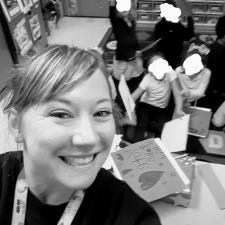
Laura Ashley H. answered • 02/12/22
MEd in Reading, a Specialist with 10+ Yrs of Classroom Experience
Twenty-six letters form the words of the English language. Twenty-one of these letters, which are spoken by blocking the air that comes from our mouths with our lips, our teeth, or our tongues, are called consonants. The consonants are b, c, d, f, g, h, j, k, l, m, n, p, q, r, s, t, v, w, x, y, and a.
Most of the consonants have only one sound. Seven of the consonants have more than one sound. And consonants can be combined to create additional sounds (called diagraphs and blends, see below!**).
Fourteen of the twenty-one consonants usually have only one sound, no matter where they occur in a word.
As you read the following list of words, say each one aloud and notice how the letter sounds the same, whether it appears at the beginning, middle, or end of the word:
- b bone cabin sob
- f fox after hoof
- h hello behind inhabit
- j jay eject injure
- k kite unkind look
- l love alone sail
- m moon home sum
- n nest panel raisin
- p pork hope leap
- r rent arise soar
- t tall later forget
Note that some of these consonants, such as b, h, p, and w, can be silent in some words.
Seven of the consonants (c, g, d, q, s, y, and x) have more than one sound. The letter c sounds like either the s in soft or the k in kind.
**Blends of consonants create entirely new sounds, called diagraphs. For example, both the combinations gh and ph sound like the letter f. To say the sh combination, you do not blend the s sound and the h sound. Instead, you create an entirely new sound. Say aloud the words shine, rush, and wishing to hear this sound.
Other blends are made up of two consonants combined together, making a new sound. However, when you say these blends aloud, you can hear the individual letter sound. For example:
- bl - blue, black
- st- straw, star
- cl- clown, cloud
Sometimes, a consonant is not pronounced at all. For example, when the consonant is doubled, as in happy, call, and better, we pronounce only one of them.
Consonants are also silent in the following instances:
1. b is sometimes silent after m: lamb, crumb, tomb
2. c is silent before k: sick, back, wreck
3. c is sometimes silent after s: science, scissors, scintillate
4. d is silent before g: edge, fudge, knowledge
As you can see, there is no simple answer when is comes to the English language and all of its quirks.
But to answer your question,
The letters:
s, b, z, f, h
and the digraphs:
sh
and the blends:
st, ank
That make up the words:
- Fish
· missed
· waltz
· bone
· Bank
· of
· zoo
· list
Can make two different sounds when you say them out loud, depending on the word and how it's spelled.
Simply put, teachers often refer to these words as "Trick Words" because the letter-sounds don't match the correct spelling of the word.
I hope some of this information will help you understand phonics a little better!




